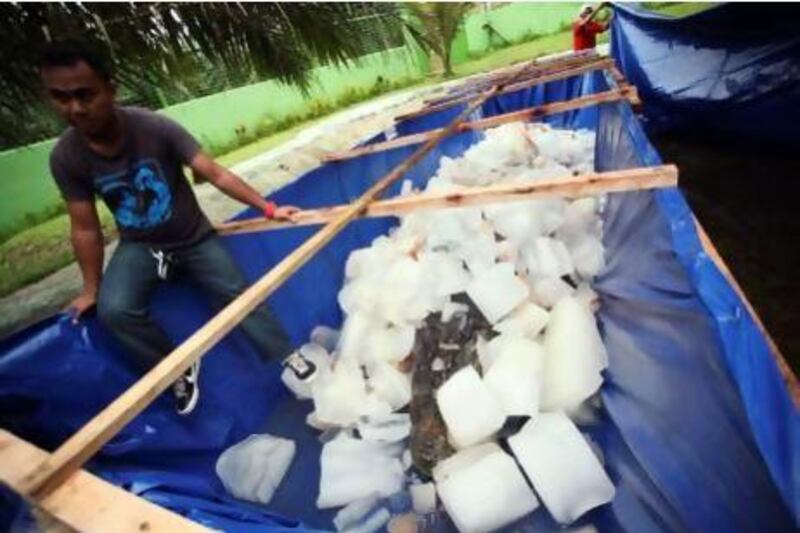MANILA // A southern Philippine town plans to hold funeral rites for the world's largest saltwater crocodile and then preserve its remains in a museum to keep tourists coming and prevent their community from slipping back into obscurity, the town's mayor said yesterday.
The crocodile's death sent villagers into tears as the reptile, which had been held in captivity since 2011, had started to draw tourists, revenue and development to the town.
The crocodile had been blamed for deadly attacks on people before it was captured and sent to live at an eco-tourism park built to house it. The reptile quickly became a star attraction of Bunawan, a far-flung town of 37,000 people in Agusan del Sur province, about 830 kilometres south-east of Manila.
The one-tonne crocodile flipped over with a bloated stomach on Sunday and a veterinarian declared it dead a few hours later, said Bunawan town mayor Edwin Cox Elorde. The reptile was estimated to be more than 50 years old, Mr Elorde said. Authorities were trying to determine the cause of death.
Guinness World Records had proclaimed it the largest saltwater crocodile in captivity last year, measuring the giant at 6.17 metres. The reptile took the top spot from an Australian crocodile that measured more than 5 metres and weighed nearly a tonne.
Veterinarian Alex Collantes said he and park personnel tried to revive the crocodile by immersing it in lukewarm water, adding that unusually cold weather this month may have affected the crocodile. Its death drove its caretaker and some villagers that gathered at the park to tears, he said.
"I'm really depressed," Mr Elorde said. "I've come to love that crocodile. It brought fame to our town and the Philippines."
The crocodile's capture in September 2011 sparked celebrations in Bunawan, but it also fostered concerns that more giant crocodiles might lurk in a marshland and creek where villagers fish. The crocodile was captured with steel cable traps during a three-week hunt after a child was killed in 2009 and a fisherman went missing. Water buffaloes have also been attacked by crocodiles in the area.
About 100 people, led by Mr Elorde, pulled the crocodile from a creek using a rope and then hoisted it by crane on to a lorry. The beast was named "Lolong" after a government environmental officer who died from a heart attack after travelling to Bunawan to help capture it, Mr Elorde said.
Bunawan town officials built an eco-tourism park to house the crocodile, which had started to draw local and foreign tourists and bring revenue to the laid-back community.
Philippine officials were planning to start constructing a 1.9km road to the park to accommodate the growing number of tourists, but it is unclear if the plan will now go ahead, Mr Elorde said.
He said he planned to have the crocodile preserved so Bunawan villagers can still marvel at it.
"I'd like them to see the crocodile that broke a world record and put our town on the map," he said.





